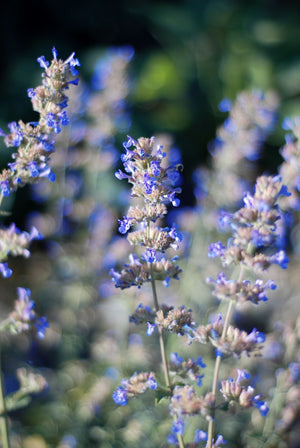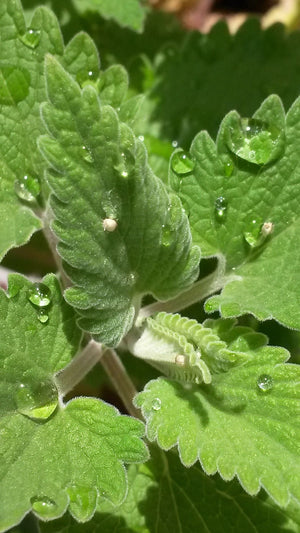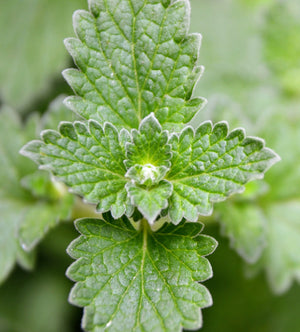The Nepeta Guide
Nepeta, commonly known as catmint or catnip, is a versatile perennial cherished for its aromatic foliage, pollinator-friendly blooms, and ability to thrive in tough conditions. With its relaxed habit, long blooming season, and soft blue, lavender, or violet flowers, nepeta complements everything from formal borders to wild pollinator gardens. It’s a go-to plant for low-maintenance designs and drought-tolerant landscapes.

About
Nepeta belongs to the mint family (Lamiaceae) and includes both ornamental and medicinal species. The most well-known species is Nepeta cataria, commonly called catnip, which contains nepetalactone—an oil that drives many cats wild. However, most garden varieties are hybrids and cultivars bred for ornamental purposes, not feline stimulation.
- Nepeta x faassenii cultivars like 'Walker's Low', 'Cat's Meow', 'Purrsian Blue', and 'Junior Walker' are prized for their mounded growth, extended blooming, and improved sterility (less reseeding).
- Compact cultivars like 'Cat's Pajamas', 'Kitten Around', and 'Little Trudy' are perfect for edging or containers.
- Nepeta grandiflora 'Summer Magic' and Nepeta subsessilis 'Blue Prelude' offer upright habits and larger blooms than typical nepeta varieties.
- Nepeta racemosa selections such as 'Blue Wonder' and 'Little Titch' have a neat form and delicate color, while Nepeta kubanica 'Neptune' stands out for its unique foliage texture and flower shape.
All nepeta varieties produce fragrant foliage that deters deer and rabbits while drawing bees, butterflies, and beneficial insects.

PLANTING
Nepeta thrives in a variety of settings and is one of the easiest perennials to grow. It excels in full sun and well-draining soil:
- USDA Hardiness Zones: Hardy in Zones 3–9, depending on variety.
- Soil: Prefers average, well-drained soil. Avoid overly rich or moist soil, which can lead to leggy growth or crown rot.
- Sunlight: Full sun yields the best flowering and compact growth. Light shade is tolerated but may reduce bloom density.
- Spacing: Space plants 12–24 inches apart, depending on mature size.
- Planting Time: Spring or fall planting is ideal for root establishment.
In poor soils, amend with compost to encourage root development, and mulch lightly to preserve moisture without burying the crown.

CARE
Nepeta is extremely low-maintenance and performs well even in neglected areas. Still, some occasional attention will keep it looking its best:
- Watering: Once established, nepeta is highly drought tolerant. Water during prolonged dry spells, but avoid soggy conditions.
- Fertilizing: Rarely necessary. In nutrient-poor soils, apply a balanced fertilizer in early spring.
- Pruning: Shear back by one-third after the first flush of blooms to encourage reblooming and neaten the habit.
- Deadheading: Optional, but removing spent blooms can improve appearance and prolong flowering.
- Dividing: Divide clumps every 3–4 years in early spring or fall to rejuvenate the plant and manage size.
Many cultivars like 'Walker's Low' and 'Cat's Meow' are sterile, which helps prevent unwanted spread.

HOW TO USE
Nepeta's soft colors, fragrant leaves, and easy care make it ideal for multiple landscape uses:
- Edging & Borders: Use compact varieties like 'Kitten Around' or 'Little Trudy' to line pathways or mixed beds.
- Pollinator Gardens: Plant in drifts alongside echinacea, salvia, rudbeckia, and agastache to attract bees and butterflies.
- Rock Gardens & Slopes: Drought tolerance and spreading growth make nepeta excellent for tough spots and erosion control.
- Containers: Smaller types like 'Cat’s Pajamas' perform beautifully in pots with rosemary, lavender, or ornamental grasses.
- Formal Plantings: 'Walker's Low' is a favorite for softening the edges of hardscapes or creating a haze of color around shrub roses.
Pair nepeta with yarrow, daylilies, ornamental grasses, or alliums for layered designs that balance color and texture.

COMMON QUESTIONS
- How to propagate nepeta? Easily propagated by division in spring or fall. You can also root softwood cuttings in early summer.
- Is nepeta deer resistant? Yes, its fragrant foliage is unpalatable to deer and rabbits.
- How to care for nepeta? Plant in full sun with well-drained soil, shear after bloom, and divide every few years to maintain vigor.
- How to grow nepeta? Grow in sun with good drainage, minimal watering, and periodic pruning. It’s suitable for beginners and tough sites.
- When to prune nepeta? Cut back by one-third after blooming to encourage a second round of flowers. Full pruning can be done in early spring.
- Is nepeta invasive? Some species like N. cataria may self-seed heavily, but most hybrids are sterile and well-behaved.
- Is nepeta toxic to cats? N. cataria (catnip) is not toxic and is stimulating to many cats. Ornamental varieties are generally safe but may lack the same effect.
- Is nepeta toxic to dogs? No, nepeta is not toxic to dogs.
- Can nepeta grow in shade? Light shade is tolerated, especially in hot climates, but full sun is best for flowering and compact growth.
Conclusion
Nepeta is a resilient, fragrant, and long-blooming perennial that brings texture, color, and pollinator value to the garden. With numerous cultivars in all sizes and flower forms, it's a valuable addition to borders, cottage gardens, and waterwise landscapes. Whether you grow ‘Purrsian Blue’ for its neat mounding form or ‘Six Hills Giant’ for larger-scale plantings, nepeta delivers both beauty and function with minimal effort.
The Nepeta Collection
Sold Out
Sold Out
Sold Out



